-
 Bitcoin
Bitcoin $106,754.6083
1.33% -
 Ethereum
Ethereum $2,625.8249
3.80% -
 Tether USDt
Tether USDt $1.0001
-0.03% -
 XRP
XRP $2.1891
1.67% -
 BNB
BNB $654.5220
0.66% -
 Solana
Solana $156.9428
7.28% -
 USDC
USDC $0.9998
0.00% -
 Dogecoin
Dogecoin $0.1780
1.14% -
 TRON
TRON $0.2706
-0.16% -
 Cardano
Cardano $0.6470
2.77% -
 Hyperliquid
Hyperliquid $44.6467
10.24% -
 Sui
Sui $3.1128
3.86% -
 Bitcoin Cash
Bitcoin Cash $455.7646
3.00% -
 Chainlink
Chainlink $13.6858
4.08% -
 UNUS SED LEO
UNUS SED LEO $9.2682
0.21% -
 Avalanche
Avalanche $19.7433
3.79% -
 Stellar
Stellar $0.2616
1.64% -
 Toncoin
Toncoin $3.0222
2.19% -
 Shiba Inu
Shiba Inu $0.0...01220
1.49% -
 Hedera
Hedera $0.1580
2.75% -
 Litecoin
Litecoin $87.4964
2.29% -
 Polkadot
Polkadot $3.8958
3.05% -
 Ethena USDe
Ethena USDe $1.0000
-0.04% -
 Monero
Monero $317.2263
0.26% -
 Bitget Token
Bitget Token $4.5985
1.68% -
 Dai
Dai $0.9999
0.00% -
 Pepe
Pepe $0.0...01140
2.44% -
 Uniswap
Uniswap $7.6065
5.29% -
 Pi
Pi $0.6042
-2.00% -
 Aave
Aave $289.6343
6.02%
What does it mean that the K line has a continuous long upper shadow but closes flat?
Repeated K lines with long upper shadows and flat closes signal strong selling pressure and potential trend reversal, especially after an uptrend or near resistance levels.
Jun 19, 2025 at 06:21 am
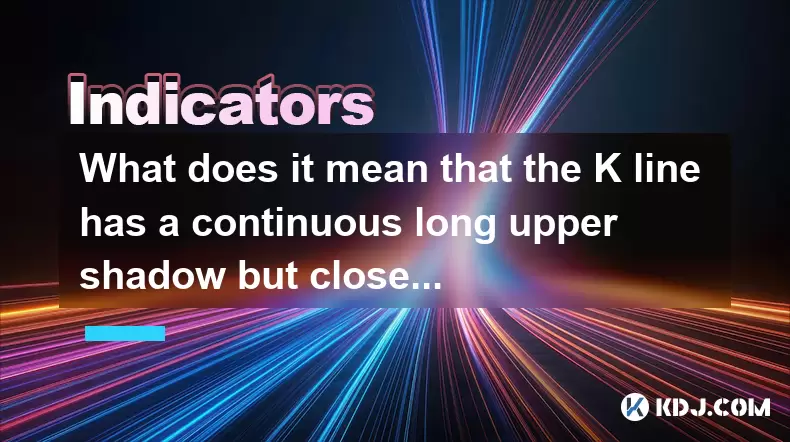
Understanding the K Line and Its Components
In candlestick charting, each candle (or K line) represents a specific time period, such as one minute, five minutes, an hour, or even a day. The structure of a K line consists of four key components: open price, close price, high price, and low price. These prices are visually represented through the body and shadows (also known as wicks) of the candle.
The body is formed between the open and close prices. If the close price is higher than the open, it's typically colored green or white; if lower, red or black. The upper shadow indicates how high the price went during that period, while the lower shadow shows how low it dropped. When a K line has a continuous long upper shadow but closes flat, this means that in multiple consecutive candles, the price attempted to rise but was rejected by sellers, ultimately closing near its opening level.
What Does a Long Upper Shadow Indicate?
A long upper shadow on a K line signals that buyers pushed the price upward during the session but faced strong selling pressure that drove the price back down. This often reflects a lack of buying momentum and potential resistance at higher levels.
When this pattern appears repeatedly — meaning there are multiple K lines with long upper shadows — it suggests a consistent rejection of higher prices. The market may be testing a certain level, but each time, the bulls fail to hold their gains. This behavior can indicate weakening bullish strength and growing bearish control.
Key characteristics of this phenomenon include:
- Price reaches new highs during the candle formation
- Sellers push the price back down
- Close remains near the open price
- Repeated occurrence across several candles
This pattern is particularly meaningful when observed after a prolonged uptrend or near critical resistance zones.
The Significance of a Flat Close in This Context
A flat close means that the closing price is nearly identical to the opening price. In isolation, a single candle with a flat close might not carry much significance. However, when combined with a long upper shadow, especially over multiple sessions, it becomes a powerful indicator of market indecision or reversal potential.
Each candle with these traits tells a similar story:
- Bulls attempt to drive the price up
- Bears counter aggressively
- Neither side manages to gain full control
- Resulting in a neutral close despite high volatility
This tug-of-war suggests that demand is drying up at higher levels, and traders should pay attention to volume patterns and other technical indicators for confirmation.
How to Interpret This Pattern in Different Market Conditions
The interpretation of a series of K lines with long upper shadows and flat closes depends heavily on the broader market context.
- During an uptrend: It may signal exhaustion among buyers and could precede a trend reversal.
- At key resistance levels: It highlights strong selling pressure and a possible failure to break through.
- In a sideways market: It reflects ongoing indecision and may indicate range-bound trading continuing.
It’s crucial to analyze these candles alongside tools like moving averages, RSI, MACD, or support/resistance lines to confirm whether this pattern is signaling a reversal or just temporary consolidation.
For example, if RSI is above 70 and begins to decline while these candles appear, it strengthens the case for a bearish reversal. Similarly, if volume decreases during these candles, it supports the idea that buying interest is fading.
Practical Steps to Analyze This Candlestick Pattern
To effectively assess what continuous K lines with long upper shadows and flat closes mean, follow these steps:
- Identify the trend: Determine whether the asset is in an uptrend, downtrend, or sideways movement.
- Locate key resistance areas: Use horizontal support/resistance levels or Fibonacci retracement points to see if the price is hitting a ceiling.
- Observe volume: A drop in volume during these candles may suggest reduced participation from buyers.
- Check momentum indicators: Tools like RSI, MACD, or Stochastic can help confirm whether the trend is losing steam.
- Watch for follow-through: Wait for the next candle(s) to confirm whether a reversal or continuation occurs.
If you're using platforms like Binance, TradingView, or MetaTrader, ensure your candlestick settings are set to Japanese style and your timeframe aligns with your trading strategy (e.g., daily for swing traders, hourly for day traders).
Common Misinterpretations and How to Avoid Them
Traders often misinterpret this pattern due to a lack of context or overreliance on candlestick formations alone. Some common mistakes include:
- Assuming a reversal will happen immediately after seeing the first long-shadowed candle
- Ignoring volume and other confirming signals
- Applying this analysis on very short timeframes without considering larger trends
To avoid errors, always consider the broader picture. For instance, if Bitcoin is approaching a historical resistance zone and starts forming K lines with long upper shadows and flat closes, it may be a stronger signal than if Ethereum does so in a relatively quiet phase.
Also, never trade solely based on candlestick patterns. Combine them with price action strategies, volume analysis, and risk management techniques to improve accuracy and reduce false signals.
Frequently Asked Questions
Q1: Can a single K line with a long upper shadow and flat close be significant?
Yes, it can indicate short-term resistance or hesitation in the market. However, its significance increases when seen in sequence or at key technical levels.
Q2: Should I sell immediately when I see this pattern?
Not necessarily. You should wait for confirmation such as a bearish candle following the pattern or a breakdown below a support level before making a decision.
Q3: Is this pattern more reliable in certain markets or assets?
It tends to be more reliable in major cryptocurrencies like Bitcoin and Ethereum, where price action is more predictable due to higher liquidity and market participation.
Q4: What if the pattern appears during a downtrend?
In a downtrend, it might indicate temporary pauses or fake rallies rather than genuine reversals. Traders should look for bearish continuation signs instead.
Disclaimer:info@kdj.com
The information provided is not trading advice. kdj.com does not assume any responsibility for any investments made based on the information provided in this article. Cryptocurrencies are highly volatile and it is highly recommended that you invest with caution after thorough research!
If you believe that the content used on this website infringes your copyright, please contact us immediately (info@kdj.com) and we will delete it promptly.
- RUVI AI: The Audited Solana Token Promising to Outshine Bitcoin
- 2025-06-20 04:25:12
- SEI Price Surges Amid WYST Stablecoin Buzz: What's Next for Sei Network?
- 2025-06-20 04:25:12
- Stablecoin Revolution: US Senate Paves the Way with Federal Law
- 2025-06-20 04:45:12
- Ripple, Coinbase, and Crypto Selloffs: What's the Deal?
- 2025-06-20 05:05:12
- Early-Stage Crypto Projects on Solana: Finding the Next Big Thing
- 2025-06-20 05:23:59
- Chainlink Price Prediction: Is the Accumulation Phase Here?
- 2025-06-20 05:45:12
Related knowledge
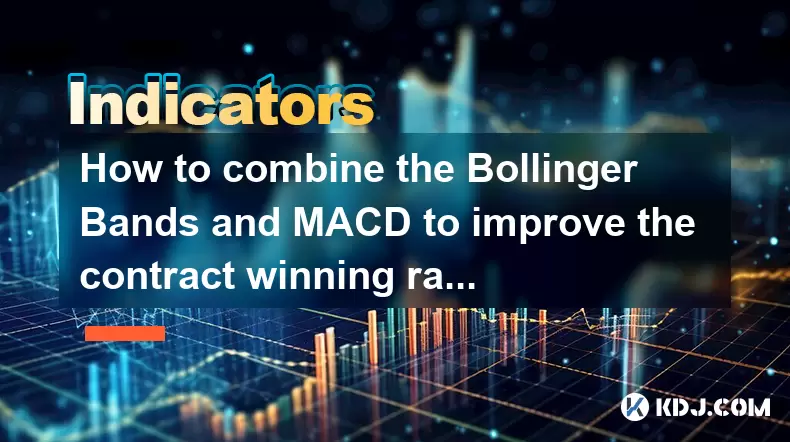
How to combine the Bollinger Bands and MACD to improve the contract winning rate?
Jun 19,2025 at 06:35pm
Understanding Bollinger Bands and MACD IndicatorsTo effectively combine Bollinger Bands and the MACD (Moving Average Convergence Divergence), it's essential to first understand what each indicator represents. Bollinger Bands consist of a middle moving average line and two outer bands that adjust based on market volatility. When prices move toward the up...

How does the long lower shadow of the K line indicate the formation of the bottom of the contract?
Jun 19,2025 at 05:00am
Understanding the Long Lower Shadow in K-Line AnalysisIn cryptocurrency trading, K-line analysis plays a pivotal role in determining market sentiment and potential price reversals. A long lower shadow, also known as a long wick, is one of the most telling candlestick patterns that traders look for when assessing whether a bottom might be forming in a co...
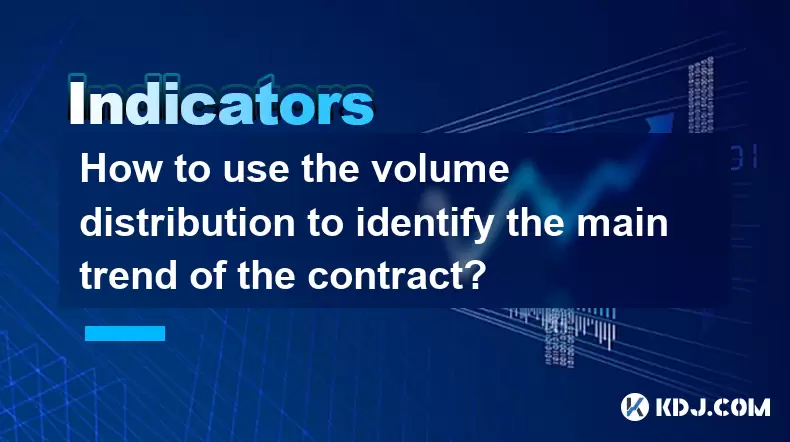
How to use the volume distribution to identify the main trend of the contract?
Jun 20,2025 at 03:56am
Understanding Volume Distribution in Cryptocurrency ContractsIn the realm of cryptocurrency trading, particularly within futures and perpetual contracts, volume distribution plays a pivotal role in deciphering market sentiment. Unlike spot markets, contract trading involves leveraged positions that can amplify both gains and losses. To navigate this com...
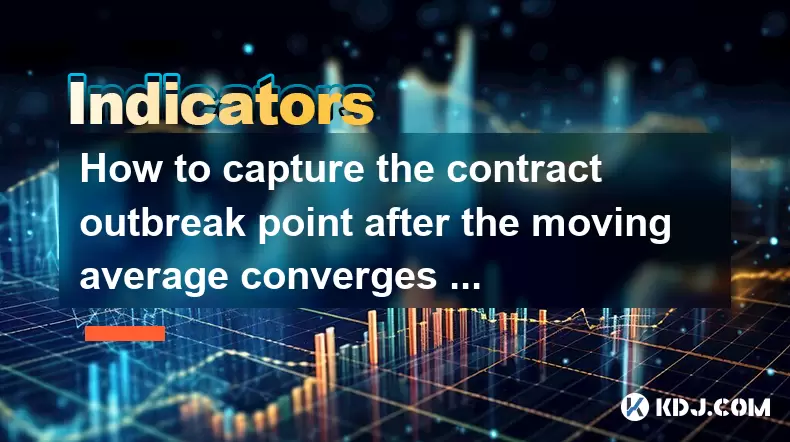
How to capture the contract outbreak point after the moving average converges and diverges?
Jun 19,2025 at 02:07pm
Understanding Moving Average Convergence and Divergence in Crypto TradingIn cryptocurrency trading, moving averages are among the most widely used technical indicators. The concept of convergence and divergence refers to how different moving averages align or separate over time. When short-term and long-term moving averages come together (converge), it ...
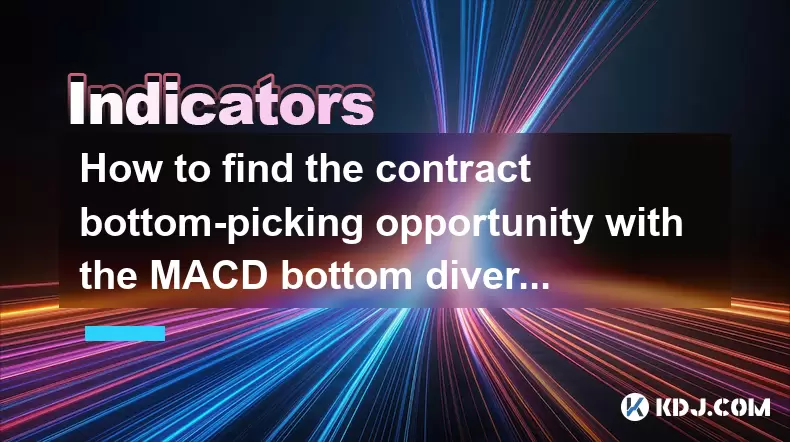
How to find the contract bottom-picking opportunity with the MACD bottom divergence?
Jun 19,2025 at 02:28pm
Understanding MACD Bottom Divergence in Cryptocurrency TradingMACD (Moving Average Convergence Divergence) is a widely used technical analysis tool that helps traders identify potential reversals in price trends. Bottom divergence, specifically, occurs when the price of an asset makes a new low, but the MACD indicator does not confirm this by making a c...

How to use the DEMARK indicator to predict the high and low points of the contract?
Jun 19,2025 at 04:21am
What Is the DEMARK Indicator?The DEMARK indicator is a technical analysis tool developed by Tom DeMark, aimed at identifying price exhaustion points in financial markets. It helps traders anticipate potential reversal zones, especially in volatile environments such as cryptocurrency contracts. The indicator works by detecting specific patterns and seque...

How to combine the Bollinger Bands and MACD to improve the contract winning rate?
Jun 19,2025 at 06:35pm
Understanding Bollinger Bands and MACD IndicatorsTo effectively combine Bollinger Bands and the MACD (Moving Average Convergence Divergence), it's essential to first understand what each indicator represents. Bollinger Bands consist of a middle moving average line and two outer bands that adjust based on market volatility. When prices move toward the up...

How does the long lower shadow of the K line indicate the formation of the bottom of the contract?
Jun 19,2025 at 05:00am
Understanding the Long Lower Shadow in K-Line AnalysisIn cryptocurrency trading, K-line analysis plays a pivotal role in determining market sentiment and potential price reversals. A long lower shadow, also known as a long wick, is one of the most telling candlestick patterns that traders look for when assessing whether a bottom might be forming in a co...

How to use the volume distribution to identify the main trend of the contract?
Jun 20,2025 at 03:56am
Understanding Volume Distribution in Cryptocurrency ContractsIn the realm of cryptocurrency trading, particularly within futures and perpetual contracts, volume distribution plays a pivotal role in deciphering market sentiment. Unlike spot markets, contract trading involves leveraged positions that can amplify both gains and losses. To navigate this com...

How to capture the contract outbreak point after the moving average converges and diverges?
Jun 19,2025 at 02:07pm
Understanding Moving Average Convergence and Divergence in Crypto TradingIn cryptocurrency trading, moving averages are among the most widely used technical indicators. The concept of convergence and divergence refers to how different moving averages align or separate over time. When short-term and long-term moving averages come together (converge), it ...

How to find the contract bottom-picking opportunity with the MACD bottom divergence?
Jun 19,2025 at 02:28pm
Understanding MACD Bottom Divergence in Cryptocurrency TradingMACD (Moving Average Convergence Divergence) is a widely used technical analysis tool that helps traders identify potential reversals in price trends. Bottom divergence, specifically, occurs when the price of an asset makes a new low, but the MACD indicator does not confirm this by making a c...

How to use the DEMARK indicator to predict the high and low points of the contract?
Jun 19,2025 at 04:21am
What Is the DEMARK Indicator?The DEMARK indicator is a technical analysis tool developed by Tom DeMark, aimed at identifying price exhaustion points in financial markets. It helps traders anticipate potential reversal zones, especially in volatile environments such as cryptocurrency contracts. The indicator works by detecting specific patterns and seque...
See all articles

























































































